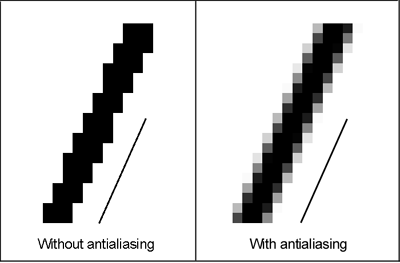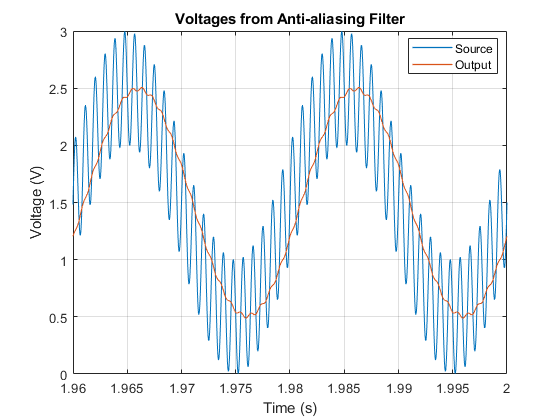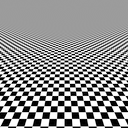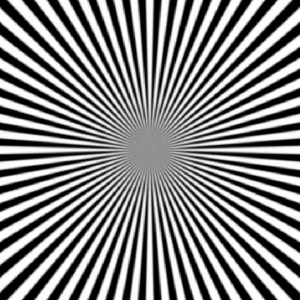We have done a good amount of learning within this series. With each new project and research oriented article, more knowledge is unraveled. We will be taking a look at antialiasing today as it was something that caught my attention in a previous article. It affects the accuracy of images as a whole, and we know the importance of precision in metrology.
Antialiasing is a technique used to add greater realism to a digital image by smoothing jagged edges on curved lines and diagonals. This is a computer graphics technique that allows for sharper resolutions for a photo based on precise geometry. Some of the “imperfections” of an image may be distorted or destroyed due to this. I am certain that in order to do processing such as photogrammetry and image stitching, a computer would need exact geometries that can be added together to form a 3D image. This causes the 3D image to have less precision overall in terms of actual dimensions.
Voltage Reading of an Anti-Alias Filter
An antialias filter refers to any filter that is used before a signal output, which in this case is our digital image. This filter is able to restrict the bandwidth of a signal. If we recall, we have talked about limiting signals before within this series in terms of filters (thresholding). We have defined this similarly as a low pass filter. A low pass filter does not allow for an image to pass through a specific energy level. This is what allows for filtering or cleaning of an image.
The goal of antialiasing is to correct images. When certain defects are present, information cannot be correctly read by a device. Antialiasing is particularly useful when a picture is rasterized and has jagged appearance due to rasterization. Converting from an analog signal or image in the real world to a digital image causes distortion. This distortion needs to be filtered out, and antialiasing is one method that does such.
There are more forms of antialiasing as well. The main forms include the following:
- Spatial antialiasing
- Temporal antialiasing
In digital signal processing, spatial antialiasing is a technique for minimizing the distortion artifacts known as aliasing when representing a high-resolution image at a lower resolution. Why would we want to do this? When thinking in terms of the 3D world, spatial antialiasing is vital. Most of our images taken in the real world if done properly will be high resolution. In order to stitch together high resolution, one needs a large amount of storage for the data that would be stitched. In order to do this in a more effective way, it is better to convert the image data into lower resolution images and then stitch them. This requires less intensive data and storage. We can then convert the lower resolution image stitch later into higher resolution 3D models after spatial antialiasing methods are used.
Temporal Sample Anti-aliasing (TSAA) seeks to reduce or remove the effects of temporal aliasing. Temporal aliasing is caused by the sampling rate (i.e. number of frames per second) of a scene being too low compared to the transformation speed of objects inside of the scene; this causes objects to appear to jump or appear at a location instead of giving the impression of smoothly moving towards them. To avoid aliasing artifacts altogether, the sampling rate of a scene must be at least twice as high as the fastest moving object. The shutter behavior of the sampling system (typically a camera) strongly influences aliasing, as the overall shape of the exposure over time determines the band-limiting of the system before sampling, an important factor in aliasing. A temporal anti-aliasing filter can be applied to a camera to achieve better band-limiting. A common example of this can be seen when seeing a car wheel move backwards while we see it in video
There is still more to unpack knowledge wise. The rabbit hole continues to open up. There are different forms of antialiasing methods within the two sections provided today as well. I will be addressing some of these things within the next article. Hopefully I will show these things off too with code.
Subscribe to Our Email Newsletter
Stay up-to-date on all the latest news from the 3D printing industry and receive information and offers from third party vendors.
You May Also Like
New Report: Semiconductor Industry to See $1.4B in 3D Printing Revenues by 2032
“The semiconductor sector has become the most strategically significant area of global industry.” Truer words are hard to come by when it comes to the modern world, and they are...
Will Photonic-Crystal Lasers Revolutionize 3D Printing?
Powder bed fusion (PBF) for metals and polymers predominantly utilizes lasers as the primary heat source. Some directed energy deposition (DED) technologies also employ lasers, while various vat polymerization methods...
3D Printing Unpeeled: Orbex Investment, IndoMIM and HP, Ultrasonic Waves
INDO-MIM has bought three HP Metal Jet S100 printers, operating two in India and one in Texas. This is a win for HP because the company has deep experience in...
3D Printing Webinar and Event Roundup: April 21, 2024
It’s another busy week of webinars and events, starting with Hannover Messe in Germany and continuing with Metalcasting Congress, Chinaplas, TechBlick’s Innovation Festival, and more. Stratasys continues its advanced training...



































